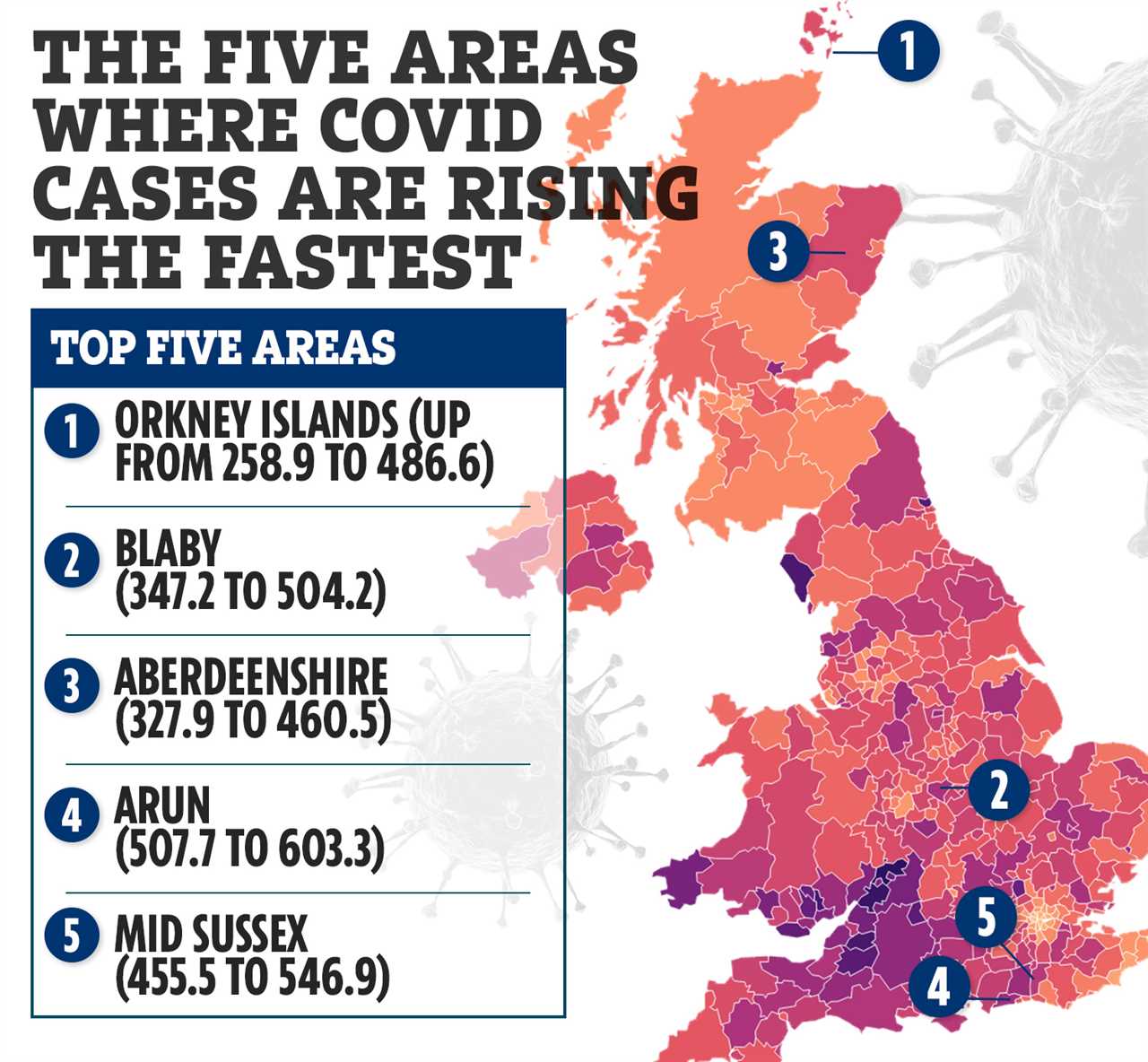CORONAVIRUS cases are rising in 64 local authorities and this interactive map reveals if your area is one of them.
Out of the 377 local areas in the UK, 313 places have seen a drop in infection rates, data has revealed.
Areas in the South West are still struggling with infection rates after public health officials in the area warned a blunder in testing would mean cases would continue to rise.
Around 43,000 people received false negative PCR test results between September 8 and October 12 – meaning many people who were infected had the virus without knowing.
Cases are still rising and Tewkesbury in Gloucestershire continues to have the highest rate in the UK, with 803 new cases in the seven days to October 28 – the equivalent of 831.1 per 100,000 people.
This is down from 1,216.1 in the seven days to October 21.
Stroud in Gloucestershire has the second highest rate, down from 1,206.8 to 771.7, with 933 new cases.
Hospital admissions in Gloucestershire have now started to rise as a result and new restrictions are now being imposed on two hospitals in the areas.
It means that just one person from family, friends or other supporters can visit patients for two hours each day at a slot arranged by staff.
The rules have come into force today at Gloucestershire Royal and Cheltenham General Hospitals.
Elsewhere and Torfaen in Wales has the third highest rate of infections in the country, down from 1,059.8 to 769.8, with 730 new cases.
The local council is encouraging eligible residents to come forward for their flu vaccinations and have reminded residents that school children in years 7-11 can all come forward for their jabs.
In Scotland, Clackmannanshire has the highest rate (633.7) and Antrim & Newtownabbey has the highest rate in Northern Ireland (571.1).
While these areas have the highest infection rates, there are five other areas that have seen a steep rise in cases in the last week.
The Orkney Islands, which has had relatively low infection rates throughout the pandemic has seen a steep rise in cases up from 258.9 to 486.6 in the last week.
It was announced just yesterday that 100 members of the military will be bought into Scotland in order to help rollout both the Covid booster campaign and flu jabs.







